Since 2005, we’ve started each year with a bang by working the Royal Langkawi International Regatta (RLIR), a premier yachting event taking place in Langkawi, Malaysia. Organised and run by the Royal Langkawi Yacht Club (RLYC), the renowned event marks the beginning of the Asian Yachting Grand Prix’s calendar and is one of the biggest sailing regattas in Asia. We may not be the cool people crewing on the yachts during the races, but we’re the team behind the RLIR website who update and maintain it as the event unfolds.
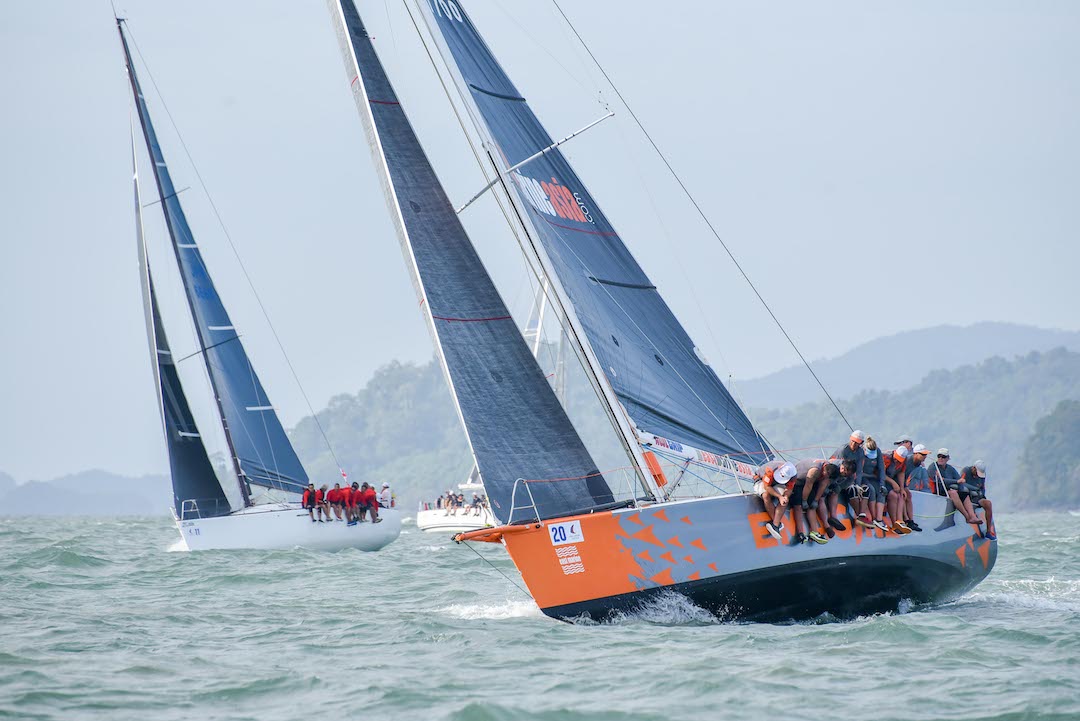
Every year, we send three team members to handle the work onsite during the regatta, however, it’s only one of three phases in our work on the RLIR website’s year-long cycle. In this post, we’ll let you peek behind the sails to see what really goes on throughout the year leading up to, during and after regatta week to ensure smooth sailing and timely web updates at the event.
A crash course in the Royal Langkawi International Regatta
Before we start talking about what we do at RLIR, it’s important to get the lay of the land or, uh, sea before diving into deeper waters. Here’s a quick look at what happens at the regatta this week.
What, when and where is the Regatta?
The RLIR is an annual sailing regatta, or series of sailboat races, hosted and run by the Royal Langkawi Yacht Club that takes place along the coast and surrounding islands of Langkawi, Malaysia. Drawing many local and international yachting teams, the regatta is an awesome display of sailing prowess and teamwork. The event takes place in early January (this year, from the 6th until the 11th) when the weather is characterised by clear blue skies, strong winds and scorching heat; the sunshine alone guarantees an epic sunburn for those who didn’t get the sunblock memo.
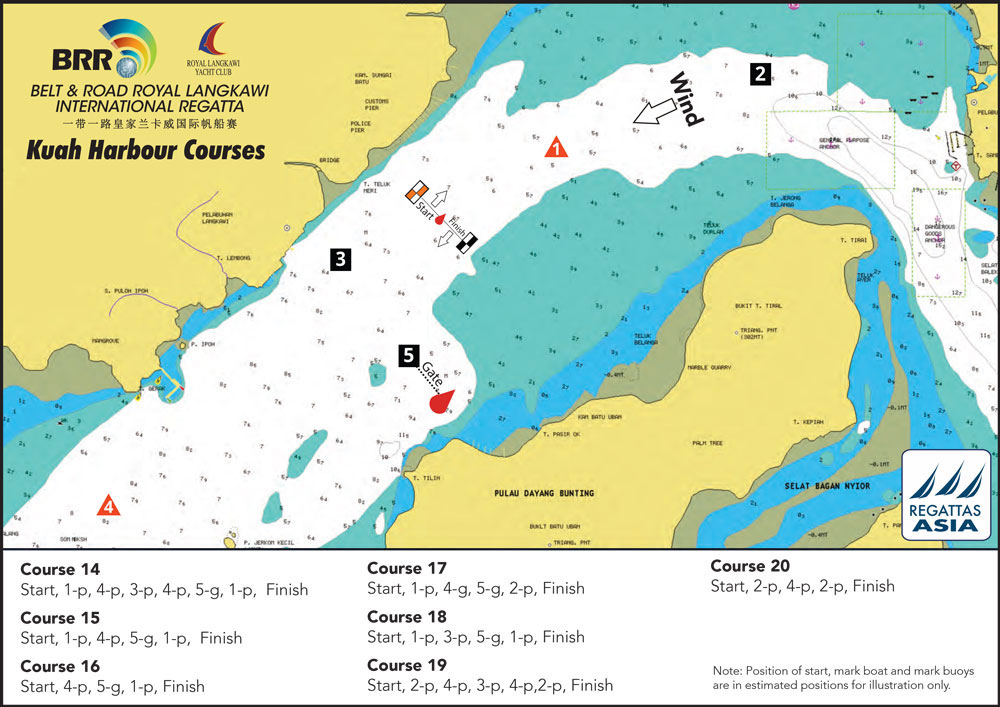
Regatta week starts with a practice race around Kuah Harbour (pictured above) which is just off Langkawi island’s biggest town, Kuah. For the 5 remaining race days, the teams compete on different courses in various locations around Langkawi’s coast and other nearby islands. Most of the evenings have organised dinners at the Royal Langkawi Yacht Club which is also when the awards are presented for the most recent races. The week culminates in the final awards and grand prize ceremony on Saturday night.
How do the actual races work?
Good question! At each race, the crew is meant to sail the predefined course in a bid to finish the fastest. The skipper, the boat’s captain, has to guide and instruct his crew to manoeuvre around the course to get to the finish line as quickly as possible. As for who’s competing, the regatta is open to six different boat classes, roughly characterised as different types of boats. However, the races themselves are class specific which means that in one race, only boats of the same class compete with each other. That day, the same racecourse will be used by all classes with each class being flagged off at a different start time.
In theory, the scoring is pretty straightforward: whoever finishes the race in the shortest time wins and the higher up you are in position, the better the score. However, calculating the winner is a little more complex than that. Though the races are class-specific, a time corrector known as a rating, and sometimes called a handicap, is also used to allow different boat classes to compete with each other despite differences in size and speed. At RLIR, the IRC rating rule is used to calculate the time corrector, known as a TCC rating, based on a boat’s measurements such as length, weight and sail area amongst other things. At the end of each race, the boat’s elapsed race time is then multiplied by its TCC to calculate the vessels corrected time. Whoever has the shortest corrected time is declared the winner. At the awards ceremonies, crews are then recognised as winners for each class as well as with a rating-corrected time.
So what does Stampede do for RLIR?
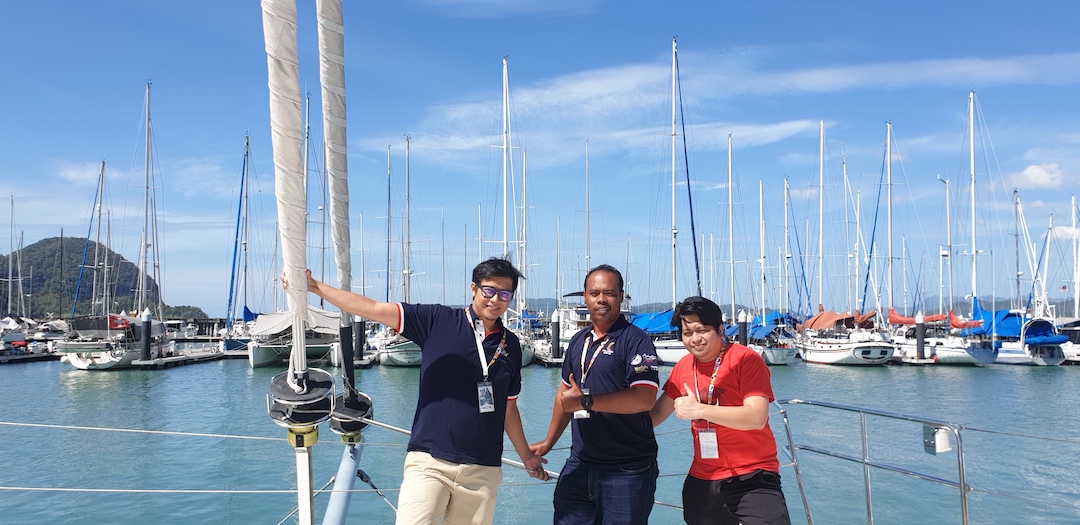
Our team has been involved with designing and maintaining the regatta website for years! 2020 is actually RLIR’s 18th year running and Stampede’s 15th as part of the landlubber digital crew. The bulk of the work usually involves maintenance and making sure that the site is technologically up to date and timely in its content. 2015, on the other hand, was special because we redesigned the Langkawi Regatta website to capture and retain the spirit of the event while making sure that it had longevity. Here, we’ll tell you a little about how the team planned and executed the redesign and how the rest of the maintenance work is otherwise split into three distinct phases: Before, during and after RLIR.
Redesigning the website
The current website was redesigned in 2015 and yet the look, feel and features remain relevant and fresh 5 years later. Our team’s design decisions were informed by a need to recreate the aura of the live event in addition to using data from the website and feedback from the RLIR team to inform its functional elements.
The team created the design from scratch, taking care to deliver the highlights and excitement of the race. This time, we also chose to give a rare glimpse of the people behind the race itself: from the yachts themselves, crews, race officers, volunteers all the way to the organising committee. Since the regatta is an annual reunion of sorts for the international yachting community, it was important for us to convey that sense of genial familiarity, synonymous with the Langkawi Regatta brand, to its online presence. Powered by WordPress, the regatta website is also geared to support fast and efficient updates as the event happens. This includes a live Newsfeed wall for everyone to watch in real time.
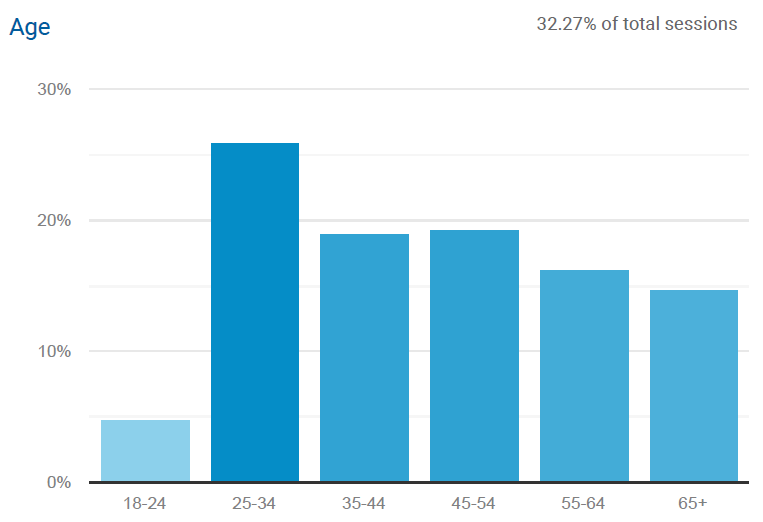
Other essential design considerations were data-informed. Based on the Langkawi Regatta website analytics (above) for multiple years, it’s clear that the vast majority of our website users are aged 40 and above. A large chunk of our users also look at the website on their mobile devices. Equipped with this data, we designed the website to ensure that everything from navigation through to font sizes and notifications is optimised for this demographic and for mobile viewing. This is a classic case of using available information on your users to inform design decisions and make meaningful and relevant experiences for them. As a result, we are still using the 2015 design today!
Before the Regatta
We usually spend the six months leading up to the race updating the RLIR website in preparation for the main event. This involves making sure that items such as SEO and plugins are the most recent. The website is a central hub for the participants and media to learn more about what’s in store so it’s imperative that we put up the information promptly.
Our standard practice is to update important information in less than 30 minutes from the time that we receive it. Vital information such as the regatta dates, crew availability (a listing page which shows people looking to crew on a boat) and banner images are some of the items that need to be done straight away followed by enabling the entry forms for participant registration. Other critical items like the schedule, sailing rules, scoring, penalty system and fees also need to go up so that participants can start planning their strategy and media can begin writing about the event. On the other hand, less critical updates such as updating the hotel rates, entrants list and unofficial press is updated within 2 hours. The pace of updating picks up considerably in December as it’s a month before the start of RLIR. This is when we receive the most content updates from the RLYC team.
During RLIR
This marks the most exciting and hectic period for us and the RLIR team. What sets this phase apart from the others is that it requires our team to be at RLYC and updating the website live. Besides the updates coming in thick and fast, sudden changes sometimes need to be made. The website’s traffic peaks during the event so it’s important that the updates are made swiftly by the onsite team so that web visitors can get the latest news.
The Team
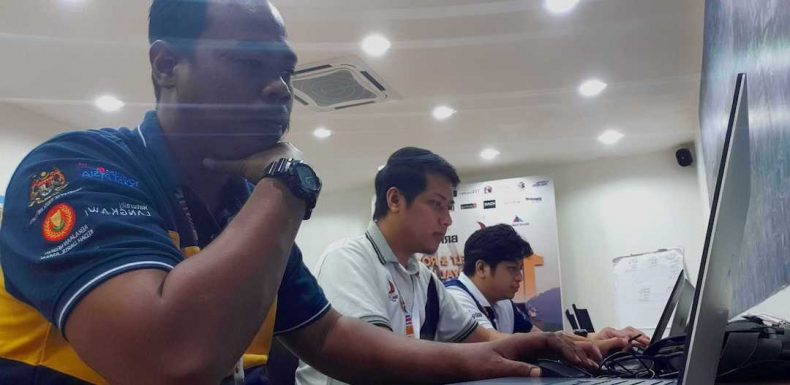
Every year, we send an RLIR team that consists of two Front End Developers (FEDs) and a Designer. This year, we’ve sent our Senior FED Iwan Hakim and FED Sani Halid along with and Saiful Hamdan, UX Designer, to handle the event. Iwan, is the team lead and an RLIR veteran with more than a decade’s worth of experience. Besides having valuable knowledge from working on so many Langkawi regattas, he’s also the linchpin of our team connecting many participants, committee members to race officers and returning volunteers. He’s even rubbed shoulders with some of the VIPs! Since he has an established relationship working with the RLIR team, he can then manage the workload and delegate which allows the team members to focus on execution.
The work assigned to each team member is based on their areas of expertise. FEDs are assigned to update the site during the event which includes daily results, highlights, videos, photo gallery and email newsletter while the designer is assigned to process the images passed to us from RLIR’s photographer. The team also sits in the media room where they can have access to good and stable internet for the updates.
A day at the regatta: Round the clock work
A typical day at the regatta actually requires continuous work from early in the morning until the wee hours. This is because news, updates and pictures come in at different times and need to be sent out throughout the day and before the next day starts. The first thing we attend to is putting up vital information and last minute instructions onto the website. This can happen as early as 6 am so that the participants get a chance to read it before they head out to the racecourse at 7 am.
After breakfast, the Stampede team starts actively looking for content that can be used on the website’s RLIR timeline page. This page provides a summary of everything that happened on the day and includes results, information, highlights and much more and will need to be updated throughout the day. Meanwhile, the other team members will start preparing the day’s race results which are released around 12 pm. Once we receive the results from the race officers, they are updated on the website as soon as possible so that everyone can access them on the mobile friendly site. Once the results are finalised, they are printed and displayed on the notice board at RLYC for our media partners.
Throughout this process, it is crucial that we ensure that the results are accurate before they go up on the site. We also try to get all the latest information, especially the race results, up before everyone gets back from the day’s races. This is so the participants can see them and celebrate immediately. Prompt updates and a stable website are especially helpful for participants as they can quickly check the results and file a protest if necessary. A protest is a formal submission made within a specified time to the jury by someone who noticed when a team or individual violated the rules of the race. If found to be true, the protest could lead to a change of results.
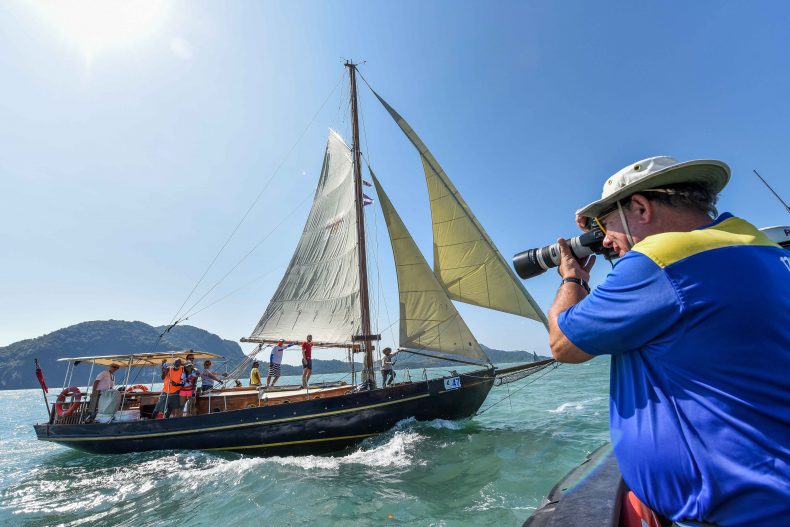
When the evening rolls around, we can start processing the rest of the day’s content updates. There is usually a lull after updating the results as the official photographer can only pass us the race images around midnight. This is because they are out at sea all day taking photos and need to shoot the evening awards ceremonies after. However, once the photos are passed to us, our designer can then go through the images, select the best ones and then optimise them for website use for the photo gallery, email newsletter (also known as an EDM) and highlights. We also add items to the RLIR Timeline including social media posts from Facebook, Instagram and Twitter to give the website visitors a peek at the day’s events as well as behind the scenes to hype up regatta. This makes it easy for everyone to find out everything quickly and from one place.
The last item we need to prepare and send out before calling it a night is the daily newsletter blast that gives an overview of what happened that day and contains videos from our media partners. The newsletter is especially important as it’s the main source of news for the people and family members who couldn’t attend the regatta. Our Mailchimp analytics also show that since it’s sent late at night, it becomes the first thing they open in the morning to view yesterday’s photos and videos to catch up with the race before gearing up for the day.
All in all, working all throughout the day and then waiting to upload the day’s photos at night which means long hours and sleepiness in the mornings. Needless to say, this can all be pretty gruelling. So how do we beat sleep? Well, we don’t just use tape to hold our eyelids open! To make sure that everyone gets enough rest, we rotate the team members so that someone is always working while the others sleep. We find this works pretty well. We also directly inject, I mean drink, our fresh coffee in the mornings from the Starbucks nearby to give us a kick start. Sometimes Shaza, our UX Principal who lives in, Langkawi actually makes a Starbies Javachip Frap delivery to the team before returning to Mission Control to monitor the website.
What we get to experience at RLIR
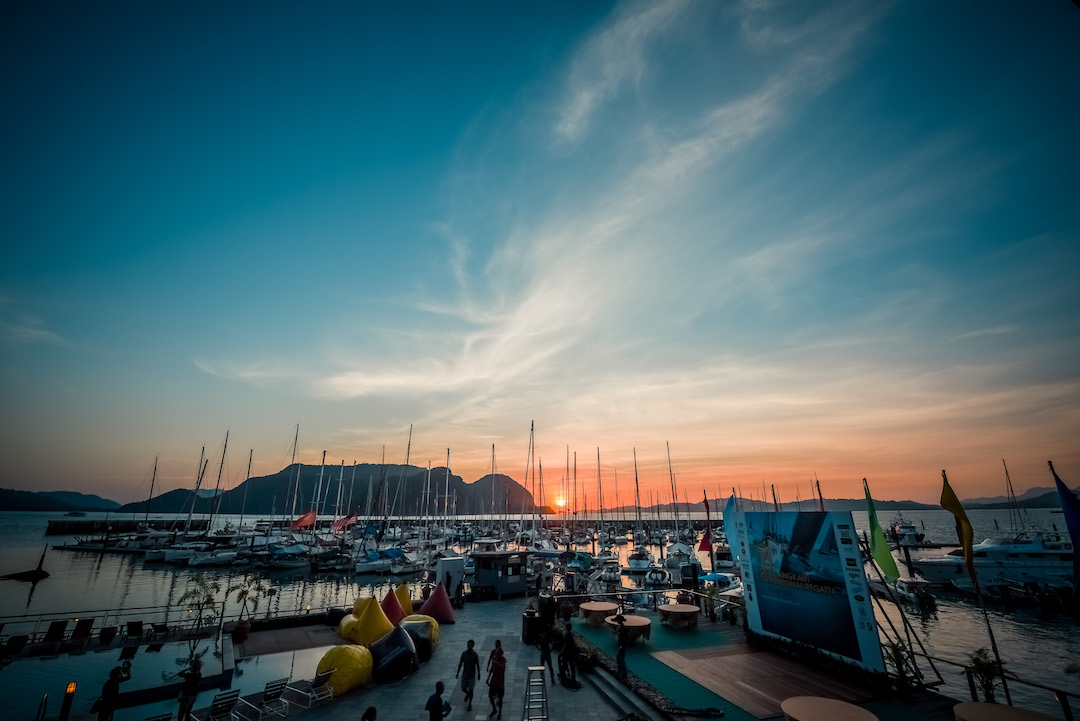
It’s not all work and no play though. Regatta is an incredible experience because we get to meet new people and learn about the world of sailing. There are always opportunities to connect with new people at events and RLIR is no exception. For example, we work closely with volunteers where there tend to be new faces every year so we get to meet a wide variety of people every time. In comparison, the media teams tend to have less turnover so we get to see familiar faces so each regatta is always a big reunion with lots of old friends.
Most people also don’t get the opportunity to watch the race up close but we’re lucky to be able to do so. At least once during regatta week, our team hops on an RLIR charter boats which zooms out to sea so we can watch the race up close. The most interesting part of the race is watching when the yachts are turning around a buoy. It’s always a moment where the crews have to work together and move around in synchrony to make the turn. Truly teamwork at its best!
We’re also lucky to have the RLIR personnel and volunteers onboard with us who answer our questions and tell us about what’s happening. By working the event, we learn a lot about sailing. From the terms to the boat structure, racing rules, scoring systems the list is endless. Learning about this also helps us do our work since we understand the lingo and can talk to others within the sailing community. Overall, it’s just an awesome getting to watch the teams in action from the water with the wind in our hair and sunshine on our face.
After the Regatta
Once the regatta is done and dusted, our priority is to notify web visitors that the event has finished. We update the site with a congratulatory message to the winners and a thank you to the participants and sponsors while displaying the full result on the homepage. We then convert the RLIR Timeline so it’s of a past regatta. By doing this, web visitors who missed the proverbial boat can still find out what happened during race week. Compared to our work during the regatta, this period is a cakewalk with the fewest updates and the least work.
RLIR is an exciting and challenging opportunity for our team to plan, coordinate and execute a year-long web campaign. Much like when the boats go round a buoy, we need to work with each other closely and communicate with the RLIR team before, during and after the regatta to make sure that the website and event is a success. We wouldn’t be able to make it through one night of the event without having a clear process and posting schedule nor a sleep plan! It also requires attention to detail and seamless delivery while maintaining the flexibility required to deal with sudden changes. Thankfully, we have the opportunity every year to meet our users and hear their ideas for how to improve the RLIR website further. Nothing beats a reality check like talking to real sailors and sailing enthusiasts.
To find out what we’ve been talking about this whole blog post, raise yer sails and head on over to langkawiregatta.com for our team’s real-time web coverage! Keep up with our scurvy team on our Facebook page, Instagram and Twitter.

